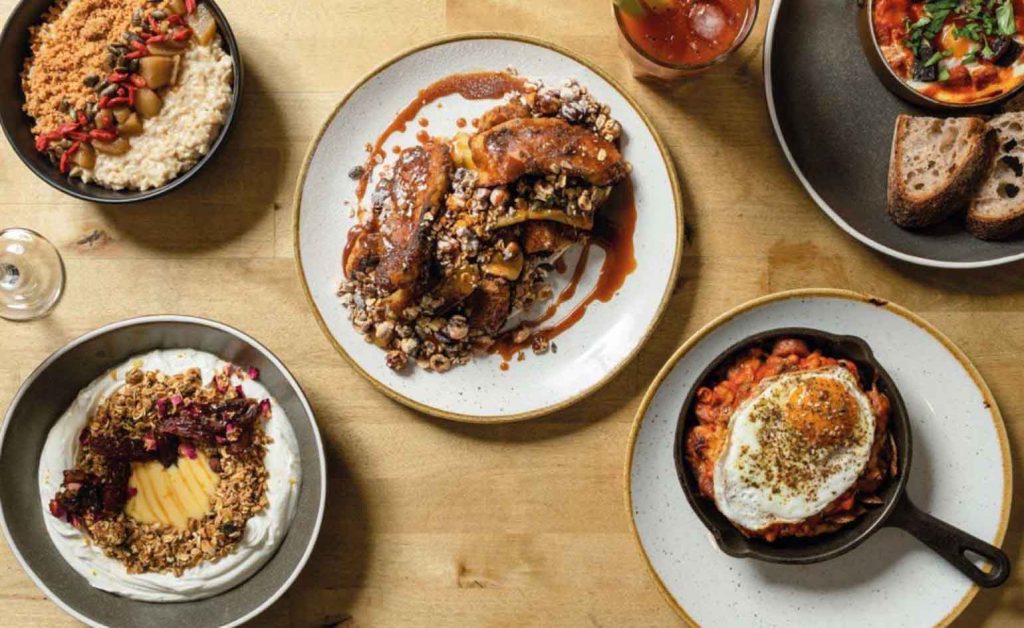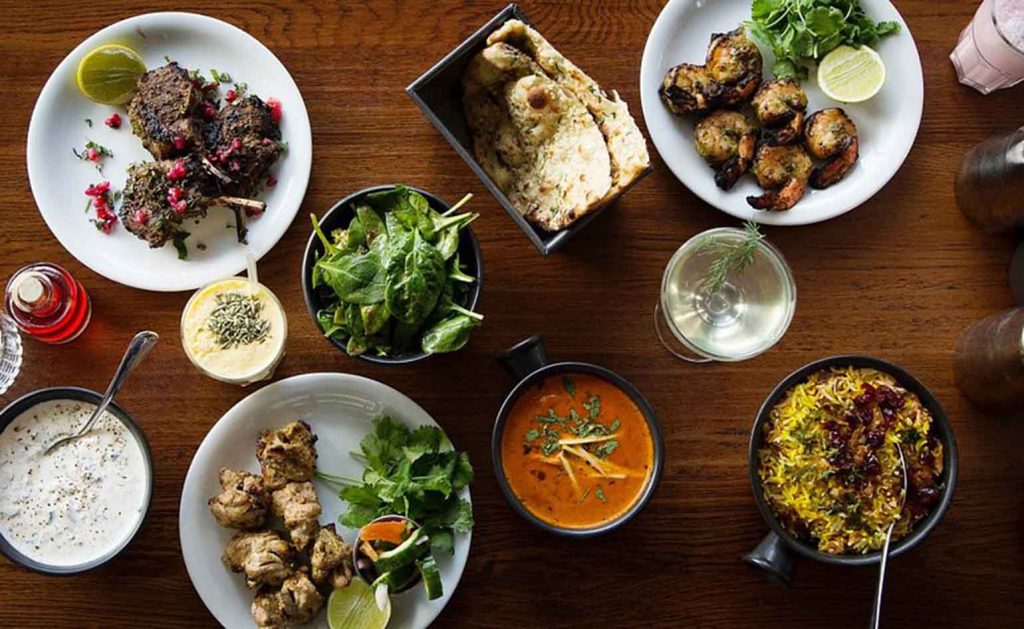
There are many ways to fall in love with Edinburgh: the sweeping views from Calton Hill, the dramatic skyline of spires and castles, the moody cobblestone streets that whisper history with every step. But if there’s one thread that ties together every experience in the Scottish capital, it is food. Edinburgh is a city where traditional recipes live side by side with modern reinventions, where you can taste centuries of heritage alongside cutting-edge gastronomy. My trip to this vibrant city became less about ticking off landmarks and more about savoring flavors—an edible map of Scotland’s capital.
What follows is not just a list of where I ate, but the unfolding of a journey: from hearty breakfasts to late-night whiskies, from bustling markets to fine-dining tables. This is a full immersion into the essence of Edinburgh through its food.
Morning Rituals: The Scottish Breakfast Experience
I began each day the way locals do—slowly, with something hearty to ward off the brisk air. The full Scottish breakfast is not for the faint of heart. A plate often arrives laden with eggs, black pudding, sausage, tattie scones, grilled tomatoes, beans, and sometimes haggis.
One memorable morning, I tucked into such a feast at The City Café, a retro diner near the Royal Mile. The haggis—a spiced mix of oats and meat—was surprisingly comforting, almost nutty, with just enough peppery kick to wake the senses. The tattie scones, simple potato flatbreads fried lightly, were perfect for scooping up baked beans.
For a lighter start, I wandered into Urban Angel, a cozy café known for its artisanal approach. Their porridge, made with Scottish oats and served with honey and berries, felt like a warm embrace. Edinburgh’s café culture has a distinct character: a balance between old-world charm and modern wellness.

The Call of the Market: Grassmarket and Beyond
To understand a city’s food, one must walk its markets. In Edinburgh, Grassmarket is both a historic square and a place to nibble. Once a medieval marketplace for cattle, today it’s lined with pubs, cafés, and occasional food stalls. I grabbed a steaming venison burger from a street vendor—it was lean, rich, and earthy, a taste that spoke directly of the Scottish Highlands.
Another gem is Edinburgh Farmers’ Market held beneath the castle’s shadow. There I discovered Isle of Mull Cheddar, crumbly yet sharp, paired with chutney from a local producer. A baker offered fresh oatcakes, a staple of Scottish kitchens for centuries, and I couldn’t resist taking some along for the rest of the day. Sampling here felt like holding the countryside in your hands: cheeses, smoked fish, jams, and artisanal chocolates all lined up under canvas tents.
Lunching Like a Local: Pub Culture and Comfort Plates
By midday, pubs beckon with warm interiors and chalkboard menus. One afternoon I stepped into The Royal Dick, a quirky bar inside Summerhall, once a veterinary school. The dish of the day was cullen skink—a thick, creamy soup made with smoked haddock, potatoes, and onions. Each spoonful carried the smoky aroma of the sea, softened by the richness of cream.
In The Sheep Heid Inn, said to be one of Scotland’s oldest pubs, I found another classic: steak and ale pie. The puff pastry was golden and crisp, cracking open to reveal slow-cooked beef swimming in dark ale gravy. It was paired with mashed neeps (turnips) and tatties, earthy and sweet. Meals like these are why pub dining is a cornerstone of Scottish life—honest, unpretentious, and deeply satisfying.
The Haggis Encounter: A Rite of Passage
No culinary exploration of Edinburgh is complete without facing haggis. While I had tasted it at breakfast, the true experience came at Whiski Bar & Restaurant on the Royal Mile. Served with the traditional “neeps and tatties” (turnips and potatoes), the haggis was earthy, peppery, and far more delicate than its reputation suggests. A dram of whisky accompanied it, the smoky liquid cutting beautifully through the richness.
Haggis is more than food—it’s an emblem of national pride, immortalized by Robert Burns in poetry. Eating it in the heart of Edinburgh felt like stepping into a cultural moment that stretched back centuries.
Afternoon Indulgence: Tea and Sweets
Between sightseeing, I often craved something sweet. Edinburgh delivers with its tearooms and bakeries. At Eteaket, I enjoyed a classic afternoon tea set: finger sandwiches, warm scones with clotted cream and jam, and delicate pastries that looked like works of art.
Another highlight was discovering shortbread from Walker’s, Scotland’s most famous buttery biscuit. Though available worldwide, eating it fresh in Scotland—crumbly, rich, and melt-in-your-mouth—felt special. For a more indulgent treat, I tried cranachan, a dessert of whipped cream, honey, raspberries, and toasted oats laced with whisky. It was light yet decadent, a perfect Scottish finale to an afternoon pause.
Dinner in Style: Edinburgh’s Fine Dining Scene
While pubs and markets give a taste of tradition, Edinburgh is also a hub for modern gastronomy. One evening, I dined at The Kitchin, a Michelin-starred restaurant by chef Tom Kitchin. His philosophy of “from nature to plate” was evident in every bite. I tried roe deer with seasonal vegetables, presented like an artwork yet grounded in Scottish ingredients.
Another night, at Restaurant Martin Wishart, I experienced French techniques infused with local produce. A starter of Orkney scallops, perfectly seared, sat on a bed of pea purée. The main, Highland venison, was rich and deeply flavored. Dining here highlighted how Edinburgh balances heritage with innovation: the land’s bounty interpreted through global techniques.
For a less formal but equally inventive experience, Dishoom Edinburgh brought Bombay comfort food to Scotland, with bacon naan rolls at breakfast and slow-cooked black daal at dinner. The blend of cultures reflected the city’s cosmopolitan soul.

Whisky: The Spirit of Scotland
Every evening seemed to end with whisky. Edinburgh is dotted with whisky bars, each promising a tour of Scotland’s liquid gold. At The Scotch Whisky Experience, I joined a guided tasting, moving from the light floral notes of Lowland whiskies to the smoky, peaty intensity of Islay.
In smaller bars like The Devil’s Advocate, tucked away in Advocate’s Close, bartenders guided me toward hidden gems—single malts I’d never have found alone. Sipping slowly, I felt the layers of flavor unfold: honey, smoke, salt, spice. Whisky here isn’t just a drink; it’s storytelling in liquid form.
Hidden Gems and Street Eats
Beyond formal dining, Edinburgh hides surprises in its streets. Near the University, I stumbled upon small cafés serving fresh falafel wraps and artisanal pizzas—evidence of the city’s diverse food culture. Food trucks in Stockbridge offered gourmet sandwiches and seafood chowders.
At one stall, I tried hot smoked salmon on oatcakes, drizzled with lemon. Simple, portable, yet unforgettable. It reminded me that Scotland’s natural bounty often shines brightest when left uncomplicated.
A Sweet Farewell: Chocolate and Gelato
On my last day, I wandered into Coro the Chocolate Café, where everything revolves around cocoa. From chocolate-dipped waffles to molten brownies, it was a decadent finale.
To balance the richness, I grabbed a gelato from Mary’s Milk Bar, perched on Grassmarket with castle views. Flavors like whisky honeycomb and fig sorbet captured the playful creativity of Edinburgh’s food artisans. Sitting on the steps, spoon in hand, I realized that food here is inseparable from place. The taste becomes memory, entwined with the cobblestones and skyline.
Reflections: Edinburgh on the Palate
Travel often tempts us with postcard views and famous landmarks, but in Edinburgh I found myself guided less by itineraries and more by appetite. The city invited me to taste rather than simply to see. Each dish, from the most humble oatcake to a delicately plated Michelin-starred creation, revealed a fragment of its story. Food became my lens, sharpening every experience, making each neighborhood feel distinct and alive.
What struck me most was the seamless balance between tradition and reinvention. In one moment, I was savoring haggis with the peppery punch that has made it an emblem of Scotland for centuries; in the next, I was tasting a venison dish adorned with modern artistry at a fine-dining table. The old and the new did not clash—they complemented one another, weaving together a culinary narrative as layered as the city’s skyline of gothic spires and Georgian symmetry.
Markets captured this duality beautifully. Stalls brimmed with rustic cheeses, oatcakes, and smoked fish, the staples of Scottish households for generations, while just a few steps away artisans showcased handmade chocolates or experimental chutneys with flavors I’d never imagined. This coexistence of heritage and creativity reminded me that food here is not frozen in time—it evolves, just as Edinburgh itself does.
The drinks told stories too. Whisky, with its smoky, honeyed depths, was not simply alcohol but liquid history, carrying the memory of landscapes and distilleries. Paired with the sweetness of cranachan or the crumbly richness of shortbread, it became clear that Edinburgh’s flavors are about harmony as much as contrast.
When I finally left the city, it wasn’t only the castle silhouette or the cobblestones that lingered in my mind. It was the warmth of cullen skink on a cold afternoon, the playful surprise of gelato at Grassmarket, the ritual of tea and scones, and the quiet comfort of porridge in a café nook. Edinburgh revealed itself not merely through its sights but through its flavors. It is a city best remembered not by the steps you climb but by the bites you savor, a journey written on the palate and carried home long after the trip ends.